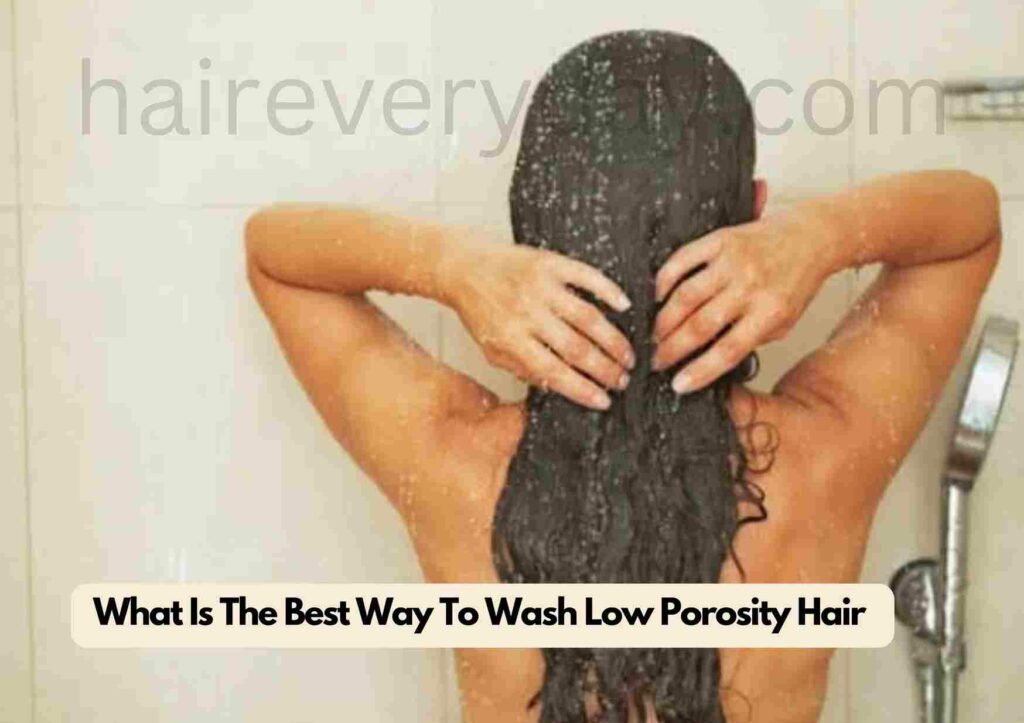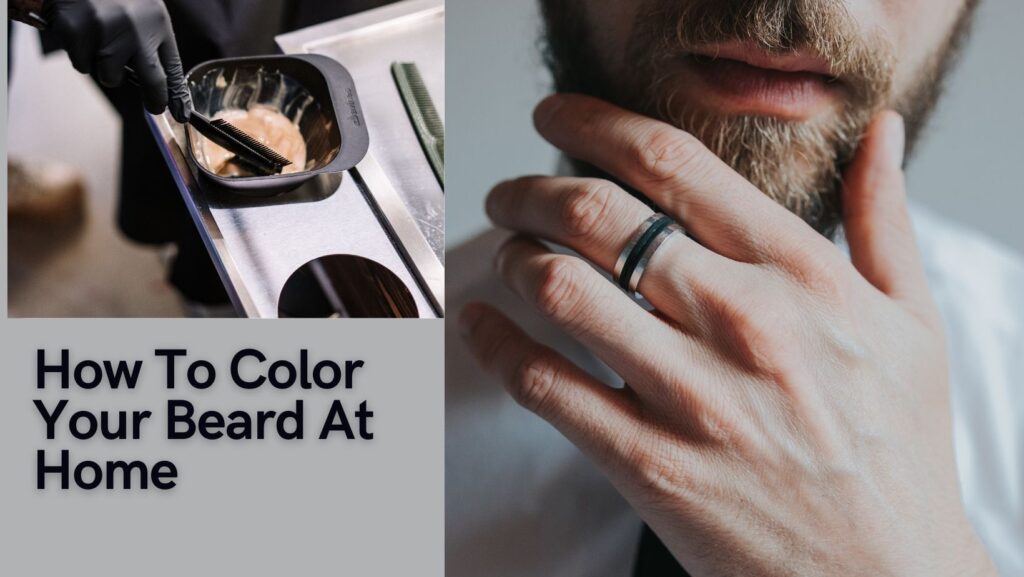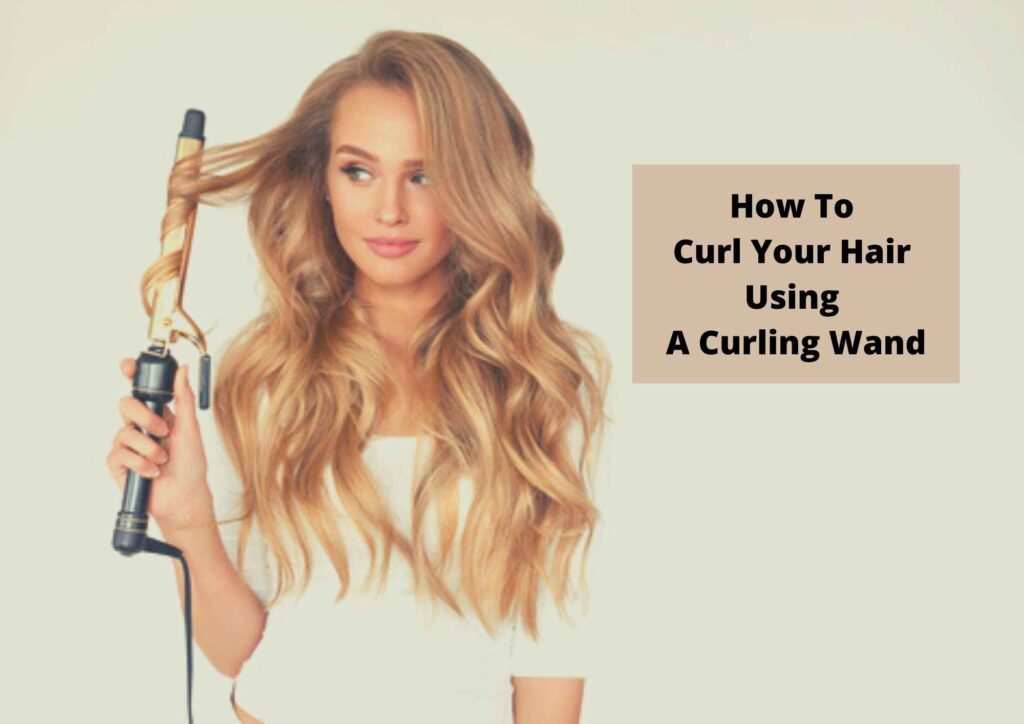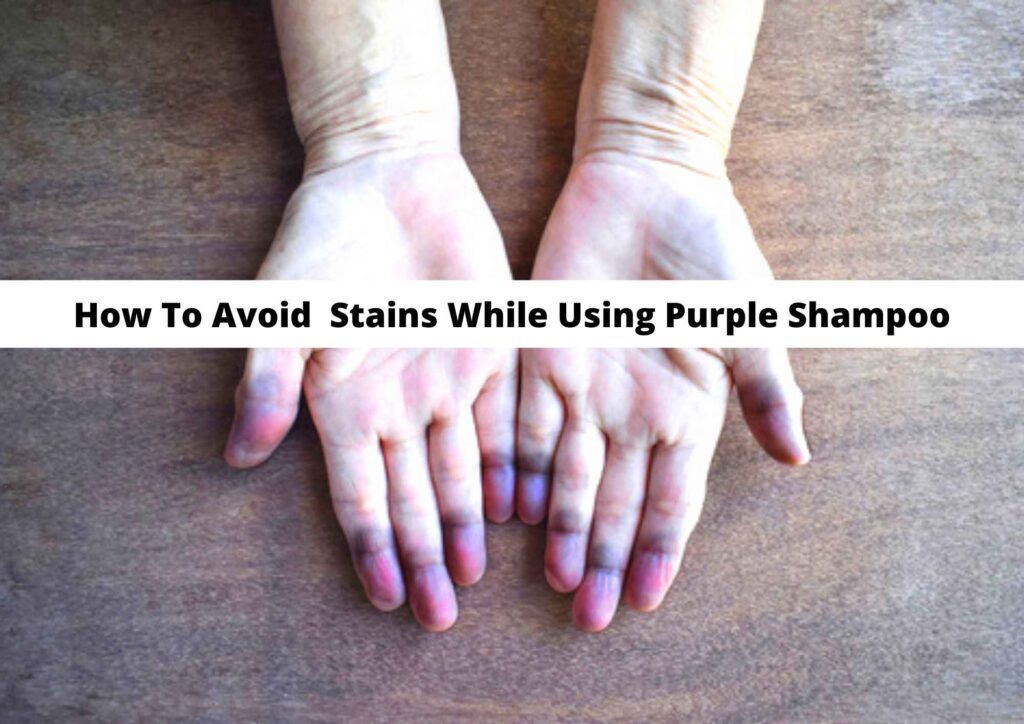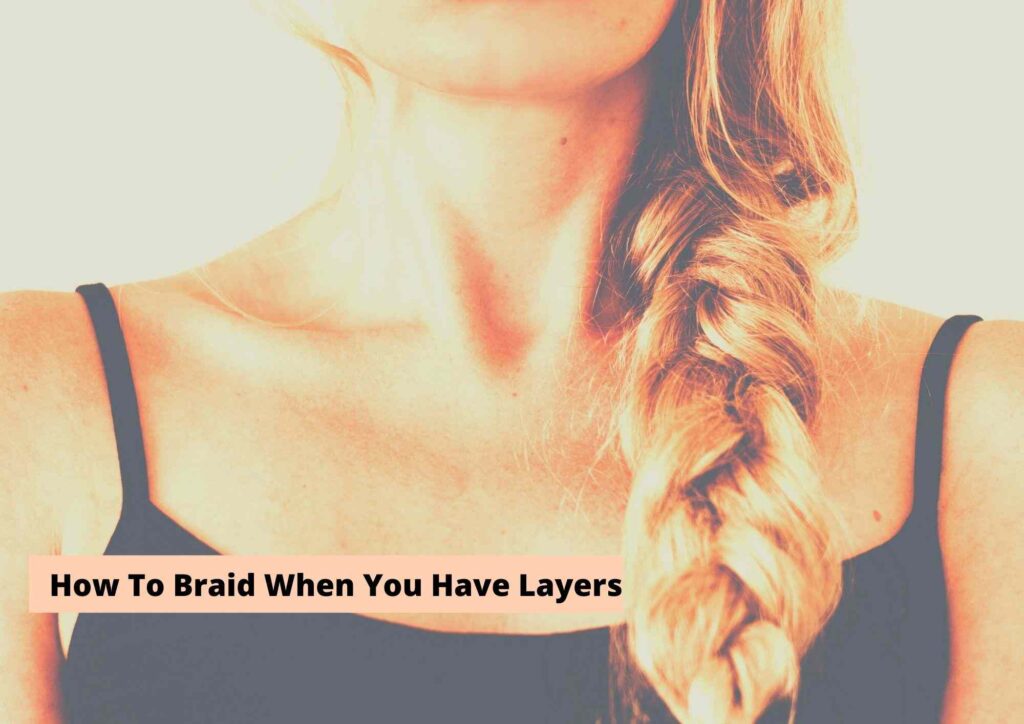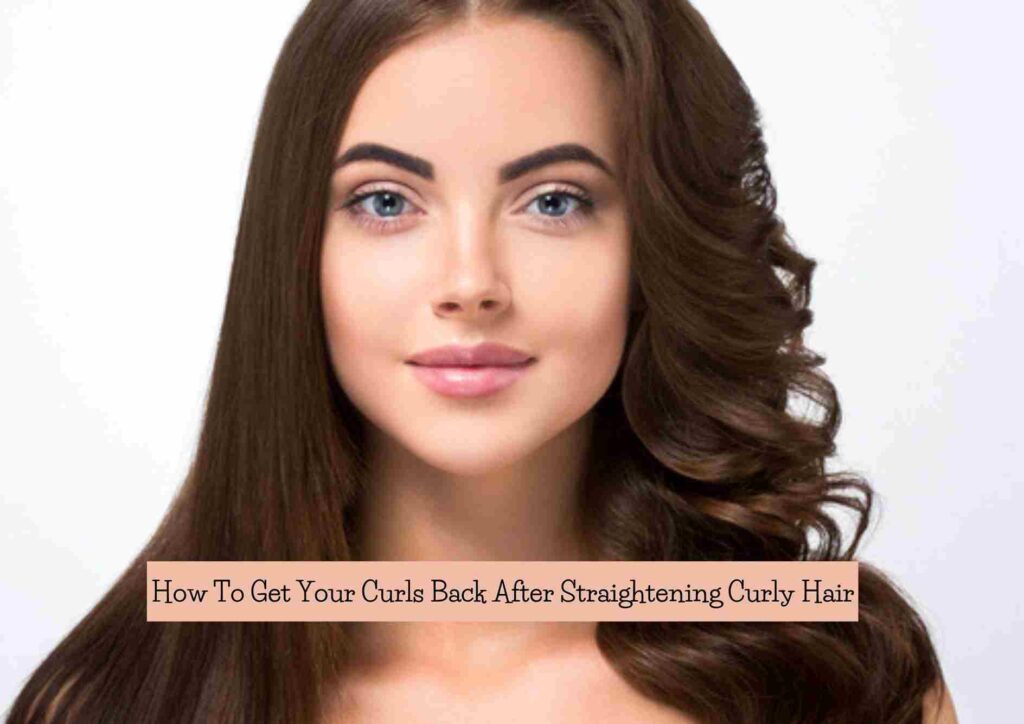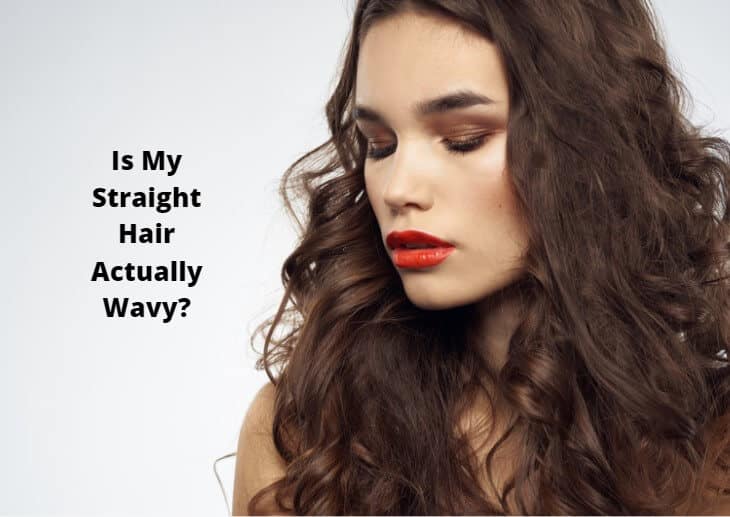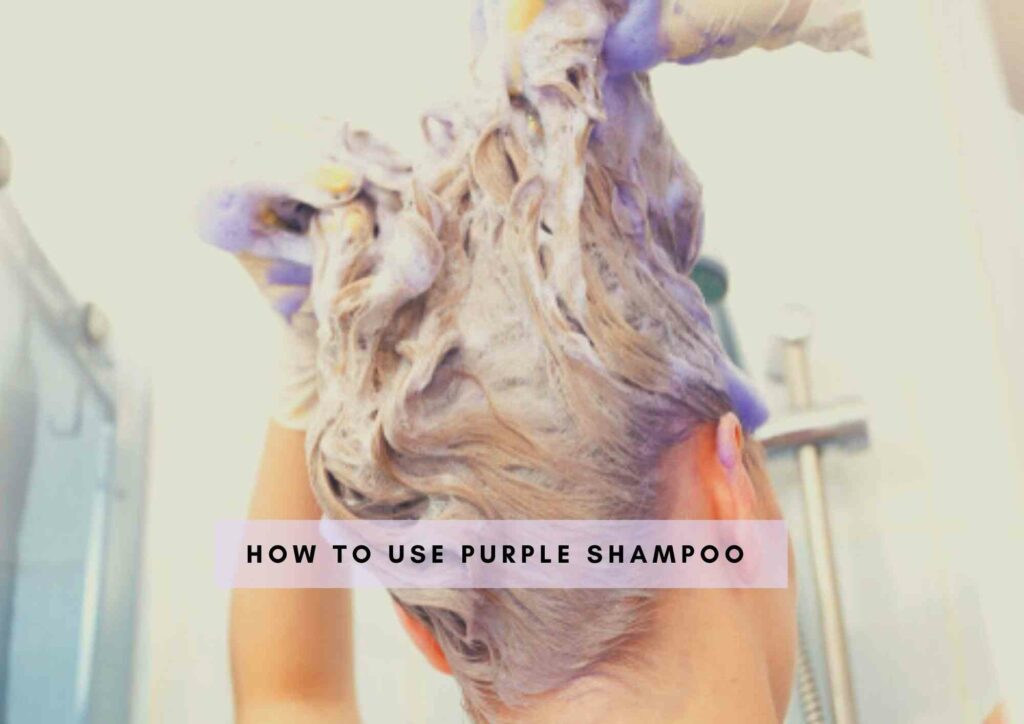If you’re wondering, “What Is The Best Way To Wash Low Porosity Hair?” here’s some tips on how to take care of this hair porosity type.
Are you tired of feeling frustrated and defeated every time you wash your low porosity hair? Does it seem like no matter what products you use or how much time and effort you put into your routine, your hair just won’t cooperate?
As someone who has struggled with this hair type for years, I feel your pain.
But I am happy to say that it is possible to properly wash and care for low porosity hair – you just need to know the right techniques and products to use.
First, it’s important to understand what low porosity hair actually is. This hair type has a tightly closed cuticle layer, which means that moisture has a difficult time penetrating the hair shaft.
As a result, low porosity hair tends to be dry, prone to build-up, and can be difficult to fully cleanse.
In this article, I will share the best way to wash low porosity hair to help you achieve healthy, moisturized, and manageable locks.
What Is The Best Way To Wash Low Porosity Hair
Low porosity hair can be challenging to wash and maintain, but with the right approach, you can keep it looking healthy and hydrated. The key is to understand the characteristics of your hair and adapt your washing routine accordingly.
Firstly, it’s important to use the right products for low porosity hair. Look for shampoos and conditioners that are specifically designed for low porosity hair, as they will contain ingredients that help to penetrate the hair shaft and boost hydration.
Avoid products that contain heavy oils or silicones, as these can weigh down your hair and make it appear greasy.
When washing your hair, use lukewarm water rather than hot water, as this will help to open up the hair cuticles and allow the shampoo to penetrate more effectively.
Start by wetting your hair thoroughly and applying the shampoo, taking care to massage it into your scalp and roots. Rinse thoroughly and repeat if necessary.
When applying conditioner, focus on the mid-lengths and ends of your hair, rather than the roots, as this is where low porosity hair tends to be dryer. Leave the conditioner on for a few minutes before rinsing, and then gently squeeze out any excess water.
Avoid using a towel to rub your hair dry, as this can cause damage and breakage – instead, use a microfiber towel or an old t-shirt to blot your hair dry.
Finally, consider incorporating a regular deep conditioning treatment into your hair care routine. This can help to boost hydration and keep your low porosity hair looking healthy and shiny.
- Related: Are Cantu Products Good For Low Porosity Hair
- Related: Is Shea Moisture Coconut And Hibiscus Good For Low Porosity Hair
- Related: Is Hair Gel Bad For Low Porosity Hair
How Often Do I Wash Low Porosity Hair In A Week
When it comes to washing low porosity hair, there is no one-size-fits-all answer. However, there are a few guidelines to keep in mind. Generally speaking, low porosity hair benefits from less frequent washing than other hair types.
This is because the tightly packed cuticles make it harder for water and other products to penetrate the hair shaft, and excess washing can strip the natural oils that keep your hair healthy and well-nourished.
In most cases, washing low porosity hair once or twice a week should be sufficient. However, this may vary depending on your scalp and lifestyle. If you exercise frequently or work in a particularly dusty or polluted environment, you may need to wash your hair more often to keep it clean and comfortable.

On the other hand, if you have a very dry scalp or tend to use a lot of heavy styling products, you may find that you need to wash your hair less often to prevent buildup and maintain the integrity of your hair.
Ultimately, the best way to wash low porosity hair is to pay attention to your needs and preferences. Experiment with different washing schedules and techniques to find what works for you.
Remember to use gentle, sulfate-free shampoos and conditioners, and always rinse your hair thoroughly to remove any product buildup. With a little bit of patience and experimentation, you can keep your low porosity hair looking healthy, shiny, and beautiful.
Top 5 Shampoos And Conditioners To Use For Low Porosity Hair
Low porosity hair can be frustrating to deal with because it often resists moisture, making it difficult to keep hydrated and healthy. One way to combat this issue is to use the right shampoo and conditioner. Here are the top five products that work wonders on low porosity hair.
1. Shea Moisture Low Porosity Protein-Free Shampoo & Conditioner: These products are specifically designed for low porosity hair, containing ingredients like baobab and tea tree oil to improve the hair’s moisture retention. They are protein-free to prevent dryness and promote healthy hair growth.
2. Maui Moisture Thicken & Restore + Bamboo Fibers Shampoo & Conditioner: Bamboo fibers help to strengthen low porosity hair, while castor oil and neem oil nourish and moisturize. The shampoo is sulfate-free, making it gentle on hair and scalp.
3. Carol’s Daughter Almond Milk Sulfate-Free Shampoo & Conditioner: Almond milk is a great ingredient for low porosity hair because it provides hydration without weighing it down. The products are sulfate-free, making them a great choice for those with sensitive scalps.
4. Kinky-Curly Come Clean Shampoo & Knot Today Conditioner: This duo is a fan favorite for low porosity hair. The shampoo removes buildup without stripping the hair of its natural oils, while the conditioner detangles and adds moisture. Both products are protein-free.
5. Aunt Jackie’s Curls & Coils Oh So Clean Moisturizing & Softening Shampoo & In Control Moisturizing & Softening Conditioner: These products contain ingredients like shea butter, olive oil, and coconut oil to hydrate and soften low porosity hair. The shampoo is sulfate-free, and the conditioner helps to minimize breakage and split ends.
Using the right shampoo and conditioner can make a huge difference in the health and appearance of low porosity hair. Try one of these products to see the benefits for yourself!
Should I Use A Sulfate Free Shampoo For Low Porosity Hair
When it comes to washing low porosity hair, there are numerous products to choose from. One of the most popular options is sulfate-free shampoo. But is it the best choice for low porosity hair?
The answer is yes! Sulfate-free shampoos are gentle on low porosity hair and scalp, making them the perfect pick for those with sensitive skin. They don’t contain harsh chemicals that strip away natural oils, as is often the case with regular shampoos.
With low porosity hair, it’s essential to use a mild shampoo that doesn’t disrupt the cuticles. Sulfate-free shampoos don’t have sulfates, which are known to cause frizz and damage to the hair. They help retain moisture and nourish the scalp, leading to healthier hair growth.
Furthermore, sulfate-free shampoos are environmentally friendly and ideal for those who are conscious of their carbon footprint. They don’t contain harmful chemicals, making them safe to use around the house and in waterways.
In conclusion, sulfate-free shampoos are a great choice for low porosity hair. They’re mild, gentle, and environmentally friendly. They keep your hair looking healthy, shiny, and strong with each wash!
Can I Use Conditioner After Shampoo For Low Porosity Hair
If you have low porosity hair, you might wonder whether it’s okay to use conditioner after shampoo. The answer is yes, but it requires a little bit of tweaking to your hair care routine.
Because low porosity hair has cuticles that are tightly closed, it can be hard for moisture to penetrate. To combat this, using a lightweight conditioner with ingredients like glycerin, aloe vera or honey will help attract moisture to your strands without weighing them down.
You can also try using a leave-in conditioner instead of a rinse-out one. This will provide the moisture your hair needs without adding extra weight.
It’s also important to focus on your rinse-out conditioner application. Apply it after shampooing and let it sit for a few minutes to allow the ingredients to penetrate your hair strands. Then, rinse it out thoroughly with warm water.
This will ensure that any excess product buildup is removed from your hair without stripping the natural oils that keep it healthy.
Overall, using a conditioner after shampoo for low porosity hair is definitely recommended, but it’s important to use the right products and techniques. Pay attention to your hair’s unique needs and adjust your routine accordingly to ensure that your hair is healthy, hydrated, and looking its best.
Is It Better To Wash Low Porosity Hair With Hot Or Cold Water
When it comes to washing low porosity hair, there’s always the question of whether to use hot or cold water. Let me start by saying that using hot water is never the best option for any hair type whatsoever.
The high temperature can strip your hair of its natural oils, leading to dryness, brittleness, and breakage. Not to mention, hot water can also end up damaging your scalp, causing irritation and flakiness. So, let’s just say it’s not worth the risk.
On the other hand, cold water has plenty of benefits for low porosity hair. Using cold water can help to seal your hair cuticles, leading to smoother and shinier strands.
Cold water also stimulates blood flow to your scalp, promoting overall hair health and growth. Plus, washing your hair with cold water is incredibly refreshing, especially during the hot summer months.
But, if you’re still not sold on using cold water, you can always go for lukewarm water. It’s not as damaging as hot water and not as invigorating as cold water, but it gets the job done without any negative side effects.
Just make sure you’re using a gentle shampoo and conditioner to protect your low porosity hair from further damage and dryness.
In conclusion, when it comes to washing low porosity hair, cold water is the way to go. It’s protective, beneficial, and overall a much better option than hot water. Trust me, your hair will thank you for it in the long run.
It’s not just about slapping some shampoo on and hoping for the best. I have explored the importance of pre-pooing, using the right shampoo, and incorporating deep conditioning treatments into our haircare routine.
But perhaps the most important thing we’ve learned is that our hair is unique, and there is no one-size-fits-all solution. We need to pay attention to our hair’s signals and adjust our routine accordingly.
Also Read:
Related: Best Oils For Low Porosity Hair
Related: Is Mafura Oil Good For Low Porosity Hair
To Summarize

